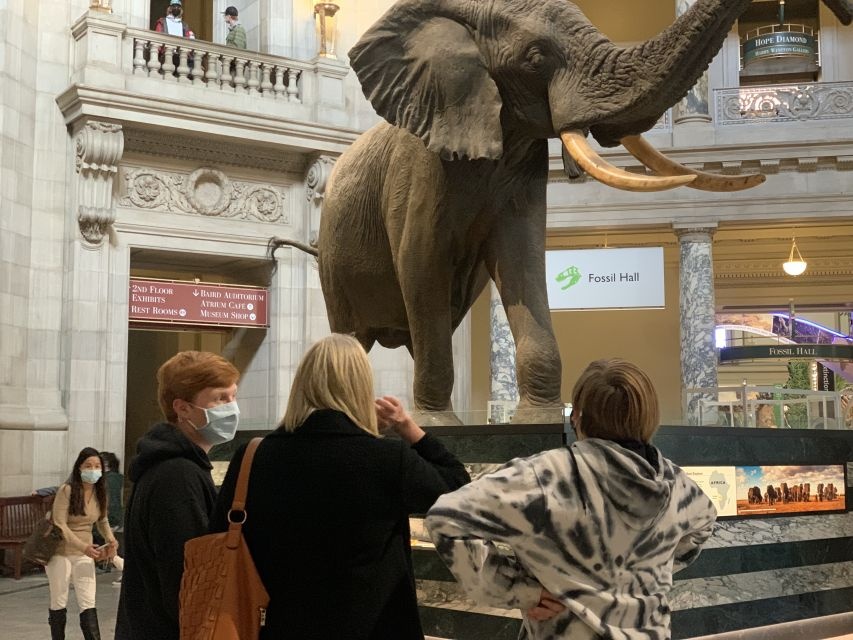Mastering Museum Security and Visitor Conduct in Washington, DC
Washington, DC's museums are treasure troves of culture and history, but navigating their security and codes of conduct is key to a smooth visit. This guide offers practical advice for travelers eager to explore these institutions with respect and confidence.
Travel Light to Speed Up Security
Bring only essential items to avoid delays at bag checks and metal detectors common in DC museums.
Plan Early Visits on Weekdays
Arriving early on weekdays helps avoid crowds and long security lines, making your experience more enjoyable.
Dress for Comfort and Accessibility
Wear shoes that are easy to remove if needed for security checks and clothes suitable for air-conditioned museum spaces.
Respect No-Photography and No-Touch Policies
Complying with exhibit-specific rules protects fragile artworks and signals respect for museum standards.
Mastering Museum Security and Visitor Conduct in Washington, DC

Smithsonian National Museum of Natural History Guided Tour
2 Hours
Discover the secrets of Earth's history on a guided tour of the Smithsonian National Museum of Natural History. Engage with spectacular exhibits and learn from expert guides in the heart of Washington, D.C.
Washington, DC’s museums invite explorers to walk corridors filled with history, art, and culture—but within these iconic walls, a subtle network of security measures and codes of conduct governs every visit. Navigating these rules is not about restriction; it’s about engaging responsibly with treasures fiercely preserved for generations to come. From the Smithsonian’s sprawling National Mall institutions to smaller, specialized museums, understanding security protocols is essential for making the most of your journey.
Security in DC's museums ranges from the discreet to the explicit. Screening checkpoints at entrances ensure that bags are inspected and prohibited items like large backpacks, food, or sharp objects don’t slip through. This is not just bureaucracy—these measures protect priceless artifacts that challenge the wear of time like guardians standing watch. Expect scanners and metal detectors at busier institutions such as the National Air and Space Museum or the National Gallery of Art; plan ahead by traveling light to move swiftly through these checkpoints.
The code of conduct is your compass inside these halls. Simple rules govern interactions: maintain low voices, avoid touching exhibits except where signage allows, and store personal items responsibly. Many museums prohibit selfie sticks, tripods, or flash photography to preserve artworks and maintain a safe environment. Adhering to these guidelines keeps the experience welcoming for all—visitors, staff, and the artifacts themselves.
Timing your visit can reduce friction. Early morning arrivals often encounter lighter crowds and less stringent lines at security. Weekdays usually offer calmer atmospheres compared to weekends or holidays. Plan hydration breaks and pauses outside museum cafes, where you can retreat briefly before diving back into exhibits that demand quiet attention. Comfortable, easy-to-remove footwear aids in quick bag screenings—an often-overlooked detail.
Beyond the visible checkpoints, security personnel intermingle with visitors, eyes sharp yet unobtrusive. Respect their presence as part of the environment's rhythm; they are allies in preserving the museum’s integrity. If you’re curious about particular protocols or need accommodations, seeking them out early in your visit simplifies your path.
In essence, each museum visit in Washington, DC, is an adventure within guarded chambers of human achievement and creativity. The security and conduct guidelines may feel like elements to negotiate, but they ultimately frame a respectful encounter with history and art. Approach them with awareness and readiness, and the museums will open not just their doors, but a richer appreciation for every painting, artifact, or exhibit fiercely cared for behind the scenes.
Nearby Trips
All Adventures
Boat Charters
Water Activities
Adventures near Washington
Discover the unique and memorable adventures that make Washington special.
Frequently Asked Questions
Are backpacks allowed in Washington, DC museums?
Most museums allow small backpacks, but large bags may be restricted and subject to inspection or storage. To streamline entry, opt for smaller bags or none at all.
Can I take pictures inside the museums?
Photography policies vary by institution. Many Smithsonian museums allow non-flash photography in general areas, but special exhibits or galleries may restrict all photography. Always check posted signs or ask staff.
What items are prohibited at museum security checkpoints?
Prohibited items commonly include food, drinks, weapons, large umbrellas, selfie sticks, and oversized bags. Each museum posts specific restrictions online and at entrances.
How do museums handle accessibility for visitors with disabilities?
Washington, DC museums offer ramps, elevators, and accessible restrooms. Many provide assistive listening devices and allow service animals. Contact visitor services ahead to arrange accommodations.
Are there quiet zones or rules about noise inside museums?
Yes, museums expect visitors to keep voices low and silence phones. Group tours and school visits follow additional guidelines to maintain a respectful atmosphere.
Is it possible to bring food or drink inside museums?
Generally, outside food and drink are prohibited inside galleries to protect artifacts. Cafes and designated dining areas allow consumption, and water fountains or refill stations are typically available.
Recommended Gear
Lightweight Daypack
Ideal for carrying essentials without bulk, facilitating faster security checks.
Comfortable Walking Shoes
Supportive footwear helps manage hours of walking and standing in museums.
Reusable Water Bottle
Staying hydrated is crucial during warm months; many museums have refill stations.
Portable Phone Charger
Ensures your phone stays powered for digital tickets, maps, and taking photos where permitted.
Local Insights
Hidden Gems
- "The Renwick Gallery's immersive art rooms beyond the main entrance"
- "The lesser-known Freer Gallery's Asian art courtyard"
- "The National Museum of the American Indian’s outdoor fountain plaza"
Wildlife
- "Urban birds like pigeons and sparrows frequent museum plazas"
- "Seasonal butterfly activity in exterior gardens"
- "Occasional sightings of squirrels along National Mall landscaping"
History
"Washington, DC’s museums reflect the city’s evolving identity, housing artifacts that chart the country’s development while standing as architectural landmarks themselves."
